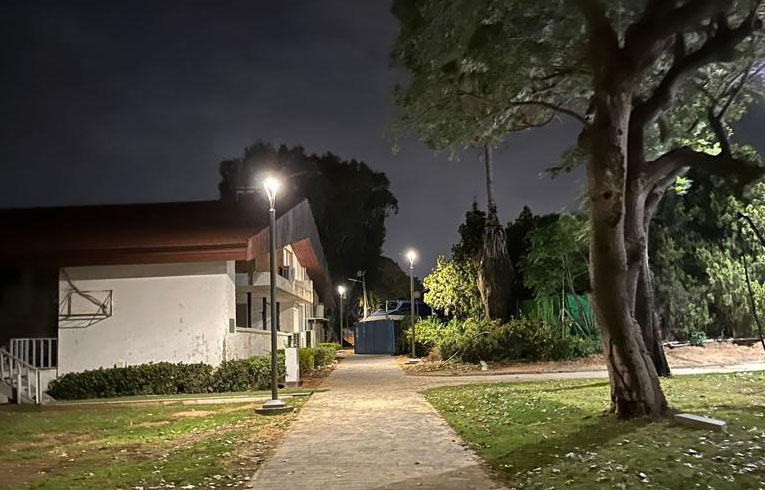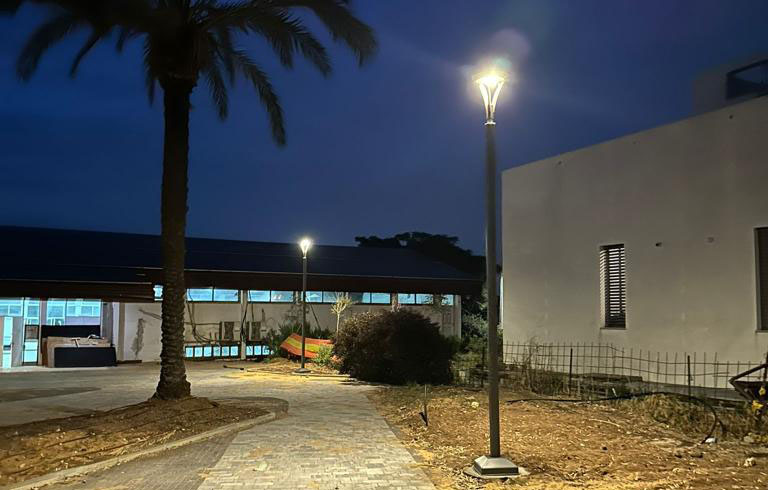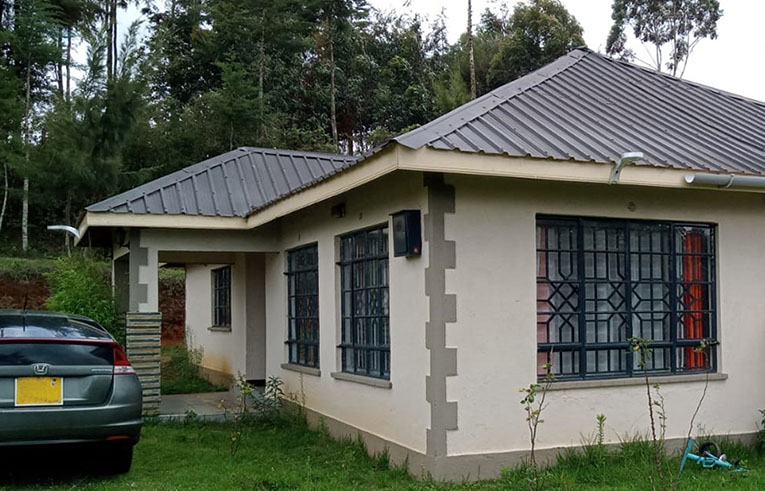Public safety is an important consideration for dealers looking to enhance the security of their local community. Solar lighting has proven to be a superior option in terms of both cost and effectiveness, compared to traditional methods such as conventional street lights and other forms of outdoor ambient lighting. In this blog post, we’ll explore the key differences between solar powered lighting solutions and more traditional methods so that you can make an informed decision about which one would be best suited to your business needs – whether it’s illuminating walkways or brightening parking lots.
1. The Problem of Outdoor Lighting in Residential Areas
Outdoor lighting is essential for residential areas, as it provides safety, security, and ambiance. However, there are several challenges and problems associated with outdoor lighting in these areas. Some of the key issues include:
-
Light pollution: Excessive or poorly directed outdoor lighting can contribute to light pollution, which affects the natural environment, wildlife behavior, and human health. Light pollution includes skyglow (the brightening of the night sky), glare (excessive brightness that causes discomfort or impairs vision), and light trespass (unwanted light entering private properties).
-
Energy consumption: Traditional outdoor lighting fixtures, such as incandescent and halogen bulbs, consume a significant amount of energy, leading to higher electricity costs and increased greenhouse gas emissions. This has prompted the need for more energy-efficient lighting solutions, like LED and solar-powered lights.
-
Maintenance and replacement costs: Outdoor lighting fixtures are exposed to various weather conditions, which can cause wear and tear over time. Frequent maintenance and replacement of bulbs or entire fixtures can be expensive and time-consuming for homeowners and community managers.
-
Safety and security concerns: Insufficient or uneven outdoor lighting can create dark spots and shadows, making it easier for criminals to hide and increasing the risk of accidents due to poor visibility. On the other hand, overly bright lighting can create glare and make it difficult for residents to see clearly at night.
-
Regulatory compliance: In many areas, there are regulations and guidelines governing outdoor lighting to minimize its impact on the environment and neighboring properties. Homeowners and community managers must ensure that their outdoor lighting complies with these requirements to avoid fines or legal action.

2. Exploring Traditional Lighting Options – Advantages and Disadvantages of Different Types
Traditional lighting options have been widely used for many years in various settings, including residential, commercial, and industrial applications. Each type of traditional lighting has its advantages and disadvantages, which are important to consider when choosing the best lighting solution for a particular situation.
1. Incandescent bulbs
Advantages:
- Warm and inviting light quality
- Inexpensive upfront cost
- Compatible with most fixtures and dimmer switches
Disadvantages:
- Short lifespan (typically 1,000 hours)
- High energy consumption
- Generates heat, which can be a safety hazard
2. Halogen bulbs
Advantages:
- Bright, white light with excellent color rendering
- More energy-efficient than incandescent bulbs
- Can be used with dimmer switches
Disadvantages:
- Shorter lifespan compared to compact fluorescent lamps (CFLs) and LEDs (typically 2,000-4,000 hours)
- Generates heat, posing a potential fire hazard
- Slightly more expensive than incandescent bulbs
3. Compact fluorescent lamps (CFLs)
Advantages:
- Energy-efficient, using up to 75% less energy than incandescent bulbs
- Longer lifespan (typically 6,000-15,000 hours)
- Available in various color temperatures and light outputs
Disadvantages:
- Contains small amounts of mercury, requiring proper disposal
- May not be compatible with all dimmer switches
- Takes time to reach full brightness
4. Fluorescent tubes
Advantages:
- Energy-efficient, especially in large spaces like offices or warehouses
- Long lifespan (typically 20,000-30,000 hours)
- Provides consistent, uniform light
Disadvantages:
- Contains mercury, requiring proper disposal
- Can create an unappealing, harsh light quality
- Requires a specific fixture (ballast) for operation
3. Examining the Benefits of Solar Lighting for Your Community
Energy savings: Solar lights generate electricity from sunlight, reducing the need for grid-supplied electricity and lowering energy costs. This can result in significant savings for communities, especially when compared to traditional lighting options that rely on non-renewable energy sources.
Reduced carbon footprint: By using solar energy, solar lights contribute to a reduction in greenhouse gas emissions and help combat climate change. This aligns with many communities’ goals of promoting sustainable and eco-friendly practices.
Low maintenance: Solar lights have fewer moving parts and require less maintenance than traditional lighting options. LED bulbs used in solar lights have a longer lifespan, reducing the frequency of replacements. Solar panels and batteries may require occasional cleaning or replacement, but overall, solar lighting systems are relatively low-maintenance.
Increased safety and security: Well-lit streets, parks, and public spaces can deter criminal activity and enhance overall safety for residents. Solar lighting can provide consistent illumination even during power outages, ensuring that communities remain safe and secure at all times.
Easy installation: Solar lights do not require complex wiring or connections to the electrical grid, making them easy to install. This flexibility allows for the placement of lights in remote or hard-to-reach locations, improving lighting coverage throughout the community.
Aesthetic appeal: Solar lighting is available in various styles and designs, allowing communities to choose options that complement their aesthetic preferences and enhance the visual appeal of public spaces.
Independence from the grid: Solar lighting systems operate independently of the electrical grid, making them less susceptible to power outages and fluctuations. This can be particularly beneficial for communities in areas prone to natural disasters or unreliable power supplies.

4. How to Choose the Right System for Your Needs – Comparing Costs, Efficiency, and Durability
Choosing the right lighting system for your needs requires considering various factors, including costs, efficiency, and durability. Here’s a guide to help you make an informed decision:
1. Determine your lighting requirements: Assess the purpose and specific needs of the area you want to illuminate. Consider factors such as the size of the space, the desired brightness level, any required features (e.g., motion sensors or dimming capabilities), and the importance of aesthetics.
2. Evaluate energy efficiency: Compare the energy consumption of different lighting options, focusing on systems with lower energy usage to reduce operational costs and environmental impact. LED and solar-powered lights are generally more energy-efficient than traditional incandescent or halogen bulbs.
3. Calculate initial costs: Consider the upfront costs of purchasing and installing the lighting system, including the price of fixtures, bulbs, wiring, and labor (if applicable). Solar lights might have higher initial costs compared to traditional systems but can save money in the long run due to lower energy consumption and maintenance expenses.
4. Estimate ongoing maintenance and replacement costs: Factor in the expected lifespan of the lighting system components, such as bulbs, batteries, and fixtures. Longer-lasting options like LED bulbs will require less frequent replacements, reducing maintenance costs over time.
5. Assess durability and weather resistance: Choose a lighting system designed to withstand the specific climate conditions in your area, such as extreme temperatures, rain, snow, or high winds. Look for durable materials and weather-resistant coatings to ensure the longevity of your lighting system.
6. Compare warranties and support: Investigate the warranties offered by different manufacturers, as well as their customer support services. A longer warranty and responsive support can provide peace of mind and protect your investment in case of product defects or issues.
7. Check for regulatory compliance: Ensure that the lighting system you choose complies with any local regulations or guidelines governing outdoor lighting, such as restrictions on brightness, color temperature, or light trespass.
8. Analyze the overall value: Weigh the pros and cons of each lighting option, considering factors like costs, efficiency, durability, aesthetics, and environmental impact. Determine which system offers the best combination of features and value for your specific needs and budget.
5. Installing Your Solar Lighting System – Tips and Tricks to Make It go Smoothly
Installing a solar lighting system can be a straightforward process if you follow some tips and tricks to ensure a smooth and efficient setup. Here are some suggestions to help with the installation:
1. Choose the right location: Select a suitable location for your solar lights where they will receive maximum sunlight during the day. Avoid placing the solar panels in shaded areas or near tall buildings or trees that could block sunlight.
2. Assemble the components: Carefully unpack and assemble the solar lighting system components, following the manufacturer’s instructions. Ensure you have all necessary parts and tools before starting the installation.
3. Plan the layout: Before installing the solar lights, plan their layout to provide optimal illumination and coverage. Consider factors such as spacing between lights, the height of the fixtures, and the angle of the solar panels to maximize sunlight exposure.
4. Install the solar panel: Securely mount the solar panel on a pole, wall, or rooftop, depending on your chosen location and the type of solar lighting system. Make sure the panel is tilted at the correct angle to optimize sunlight absorption.
5. Mount the light fixture: Attach the light fixture to the designated mounting surface, ensuring it is securely fastened and positioned correctly. For pole-mounted lights, make sure the pole is sturdy and firmly anchored into the ground.
6. Connect the wiring: If your solar lighting system requires wiring between the solar panel, battery, and light fixture, carefully connect the cables according to the manufacturer’s instructions. Use weatherproof connectors and conduit to protect the wiring from moisture and damage.
7. Install the battery: Place the battery in its designated compartment or enclosure, connecting it to the solar panel and light fixture as instructed. Ensure the battery is secure and protected from extreme temperatures and moisture.
8. Test the system: After completing the installation, allow the solar panel to charge the battery for the recommended duration before testing the lights. Make sure the lights turn on and off as expected and provide adequate illumination.
9. Schedule regular maintenance: To keep your solar lighting system functioning optimally, perform regular maintenance tasks such as cleaning the solar panel, checking the battery, and inspecting the light fixture for damage or wear.

6. Final Thoughts on Enhancing Security with Solar Light Systems
-
Improved visibility: Solar lighting systems provide consistent and reliable illumination, improving visibility at night and reducing the likelihood of accidents or criminal activity.
-
Energy savings: By harnessing the power of the sun, solar lights significantly reduce energy consumption and lower electricity costs, making them an economically viable option for long-term security needs.
-
Environmentally friendly: Solar lighting systems contribute to a reduced carbon footprint and promote eco-friendly practices, aligning with the growing global emphasis on sustainability and environmental responsibility.
-
Ease of installation: The simplicity and flexibility of solar light installations allow for efficient coverage of large areas or remote locations that may be difficult to access with traditional grid-connected lighting systems.
-
Low maintenance: Solar lighting systems generally require less maintenance than traditional lighting options, thanks to their LED bulbs’ longer lifespan and the absence of complex wiring or connections to the electrical grid.
-
Independence from the grid: Solar lights operate independently of the electrical grid, ensuring that they continue to function even during power outages or disruptions, providing uninterrupted security coverage.
-
Customization and integration: Many solar lighting systems offer advanced features such as motion sensors, timers, or remote control capabilities, allowing users to customize their security setup according to specific needs and preferences.
conclusion
we’ve discussed the issue of outdoor lighting in residential areas and explored different traditional lighting options. We then dived into the benefits of solar lighting for your community and how to choose the right system for your needs. Installing your system has it’s own unique tips and tricks, making sure it goes smoothly is important for enhancing security with a solar light system. Despite all the choices you have, having access to the best quality products is essential. Thus considering using our service for sourcing experienced product managers who can provide tailor-made and professional solutions to meet all your needs. Contact us right away if you would like a comprehensive analysis done for your projects or have any other questions about our services. With the help from our team, you’ll find just the right solar light solutions that fits both your budget as well as energy needs and ultimately enhance the lives of those in your community!
Table of Contents